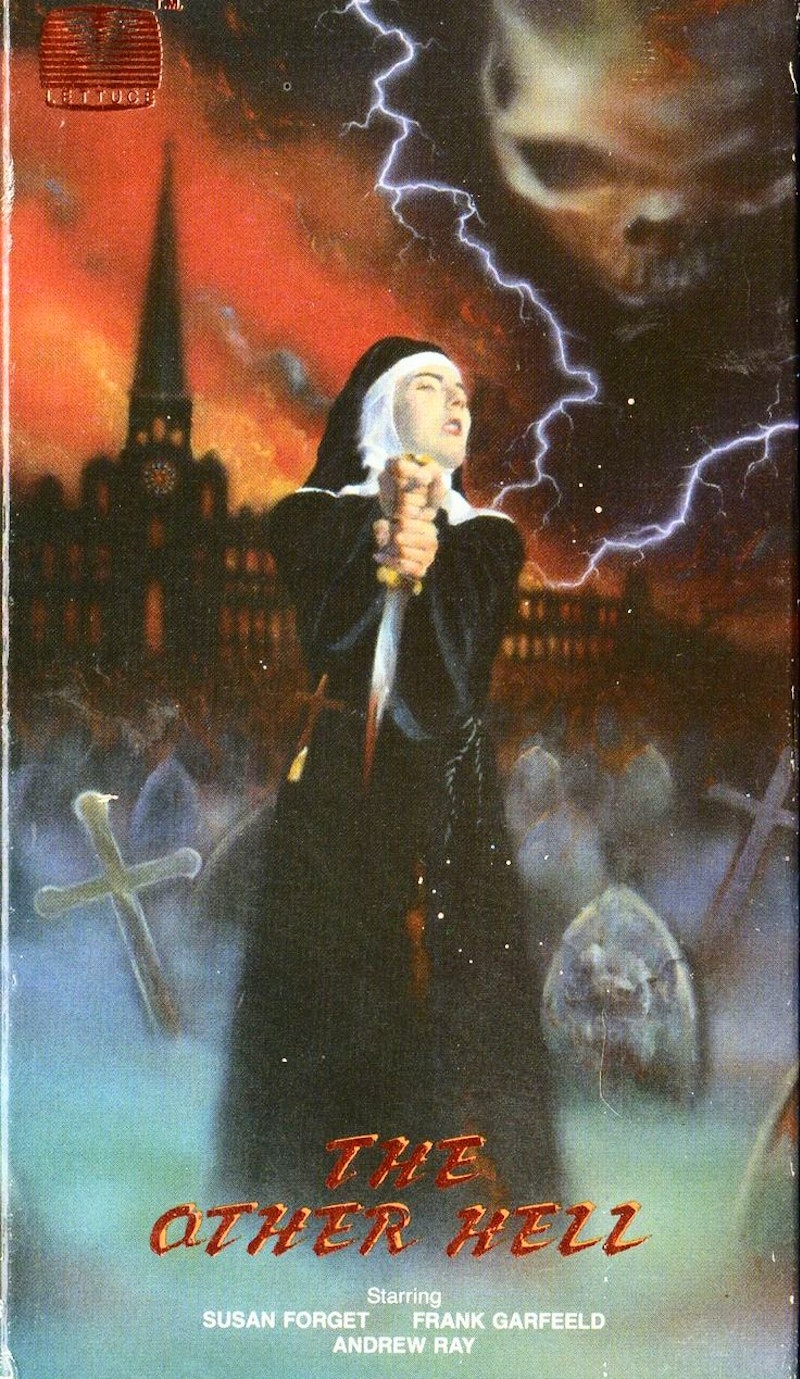Inspired by sensationalistic rumors and urban legends surrounding nuns and convents, “nunsploitation” films were spectacular stabs at the soft underbelly of Catholic power circa the late-20th century. As progressive anti-Catholic propaganda, there can be few images more powerful than the sight of nuns engaged in reckless behavior. That’s what you’ll see padding at least 90 percent of any nunsploitation movie. As lowbrow entertainment, these works provide bizarre thrills that’re non-existent in any other corner of the trash flick spectrum. In a micro-managed/spread sheeted/wannabe anti-septic society constantly verging on suicide by pigeonhole the most therapeutic statement is “rules are meant to be broken.” Nunsploitation films endure as major expressions of that statement.
Mother Joan Of The Angels (Poland, 1961): Poland’s early Cold War-era art film scene might be the last place anyone would consider a breeding ground for one of cinema’s sleaziest niches and yet this was exactly where the nunsploitation “movement” first came to life. Mother Joan is the earliest known film to focus on nuns behaving like demonic psychopaths. While it’s much tamer than the dozens of nunsploitation programmers that filled grind houses and drive-ins in the 1970s, Mother Joan Of The Angels punches all of the right blasphemy buttons to make it a pioneering genre entry. Even with leisurely pacing, stark camera work, and a remote folk horror-type setting there’s no doubt that this 1961 underground film single-handedly created the blueprint for the nunsploitation genre.
Like the numerous similar works that followed it, Mother Joan Of The Angels tells the story of a demonic possession that plagues a convent and causes nuns to dance around wildly, get shit-faced drunk, engage in free love and seduction, transform into hissing/spitting demons, and act like crazed drug addicts. Nudity and violence are infrequent and the dialogue often takes the heavy tone of a poetry reading. Unlike The Devils and other 1970s nunsploitation films, Mother Joan doesn’t bludgeon its viewers with a steady stream of shocking imagery. Its provocations unfurl in short sudden bursts buffered by lengthy stretches of suspenseful drama. What makes this film so vital is the head games that director Jerzy Kalowerowicz plays with the viewer. For art film buffs this is an absolute must; for everyone else, Mother Joan Of The Angels can be awesome but only for audiences who enjoy silence and subtlety as much as explosive Satanic viscera.
The Devils (UK, 1971): In the pantheon of subversive 1970s film, Ken Russell’s The Devils stands among the best of the many occult/anti-religious works to emerge from the “Me” decade. Critics and film historians have acknowledged its impact and there’s no doubt that, even though it wasn’t the first picture of its kind, The Devils set the bar for nunsploitation’s trademark outrageousness. This was a film that launched a thousand imitators while also sparking intelligent discourse on Catholicism’s troubled past and political power dynamics. As it was based on a true story of demonic possession that occurred in a French convent, The Devils also is remarkable for kicking off the trend of nunsploitation pictures which doubled as historical dramas (Jesus Franco’s Love Letters Of A Portuguese Nun and Domenico Paolella’s Story Of A Cloistered Nun are other popular examples of nunsploitation works that dramatized actual events).
Despite its highbrow historic pedigree, this movie still has all of the pre-requisite shocks of explicit sex, hedonism, and gore. Russell knew that in order to get an anti-religious point across the concept of right and wrong would have to be turned inside out. The “good” guy protagonists act like pompous bad guys, the demonic/nympho “bad” girls (the nuns) are sympathetic victims, and imperialist politicians dominate playing each polar opposite off each other in a shallow heartless power game. While Satan’s aura created the drama that unfolds in The Devils it’s only the picture’s very flawed human characters who manipulate this drama for selfish gains.
The Other Hell (Italy, 1980): This demented chunk of surreal horror pushed The Devils’ gleeful blaspheming to the next level. Exploitation god Bruno Mattei’s The Other Hell fees like an aggressive form of cinematic deprogramming designed to scar Catholicism beyond recognition. Themes of sexual repression, secrecy, shame, paranoia, megalomania, anti-authoritarianism and mystic empowerment abound. This is an innovative genre blaster that finds nunsploitation plot threads tangled with crime thriller tropes and Exorcist-style supernatural horror. Love it or hate it, The Other Hell is a passionate outburst eulogizing faith’s destruction at the hands of many different forms of institutional corruption. With the film’s central antagonist appearing as an abused child, the modern viewer can’t help but be reminded of the sex abuse controversies that now plague Catholicism. Was The Other Hell a reflection of all that has permanently tarnished the Church’s reputation? Only devout Catholics or film buffs can answer that question.

